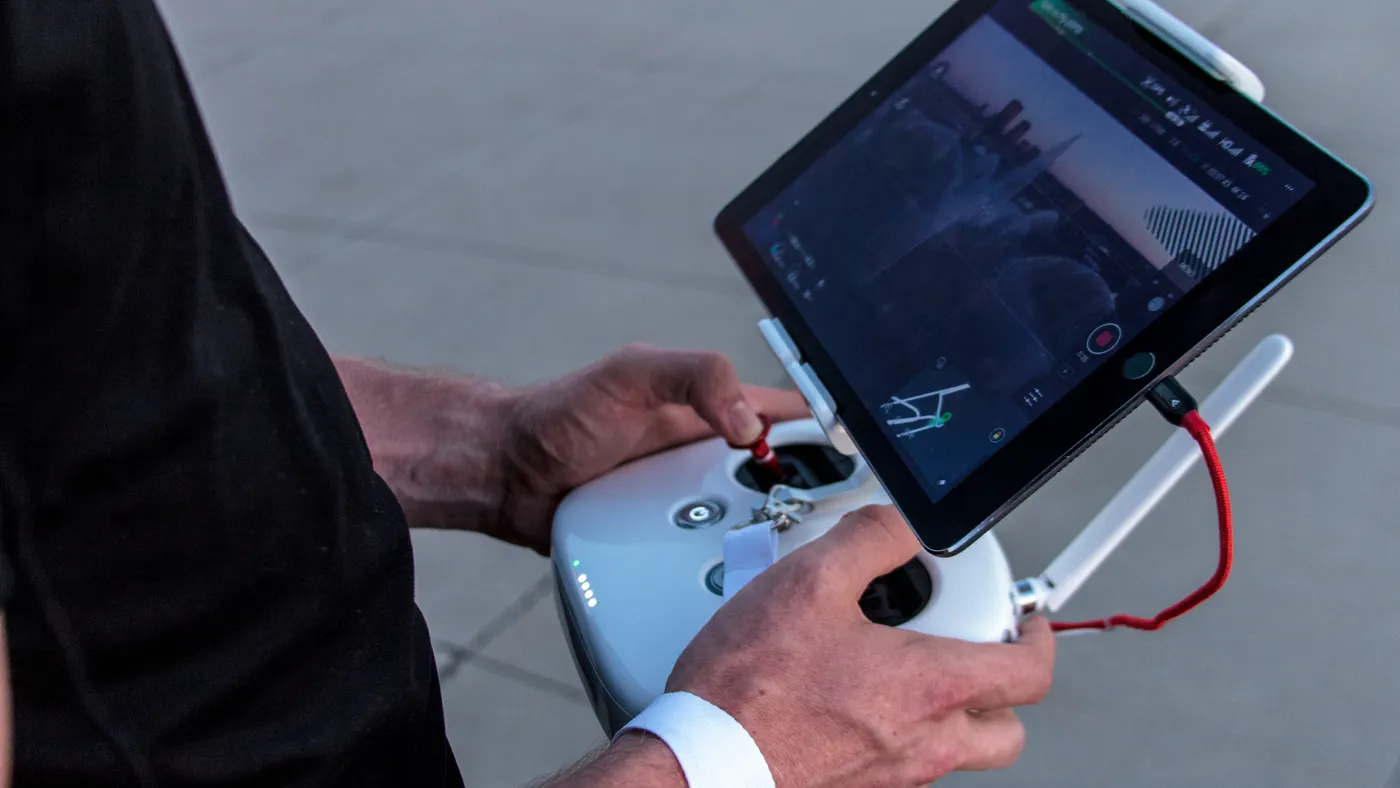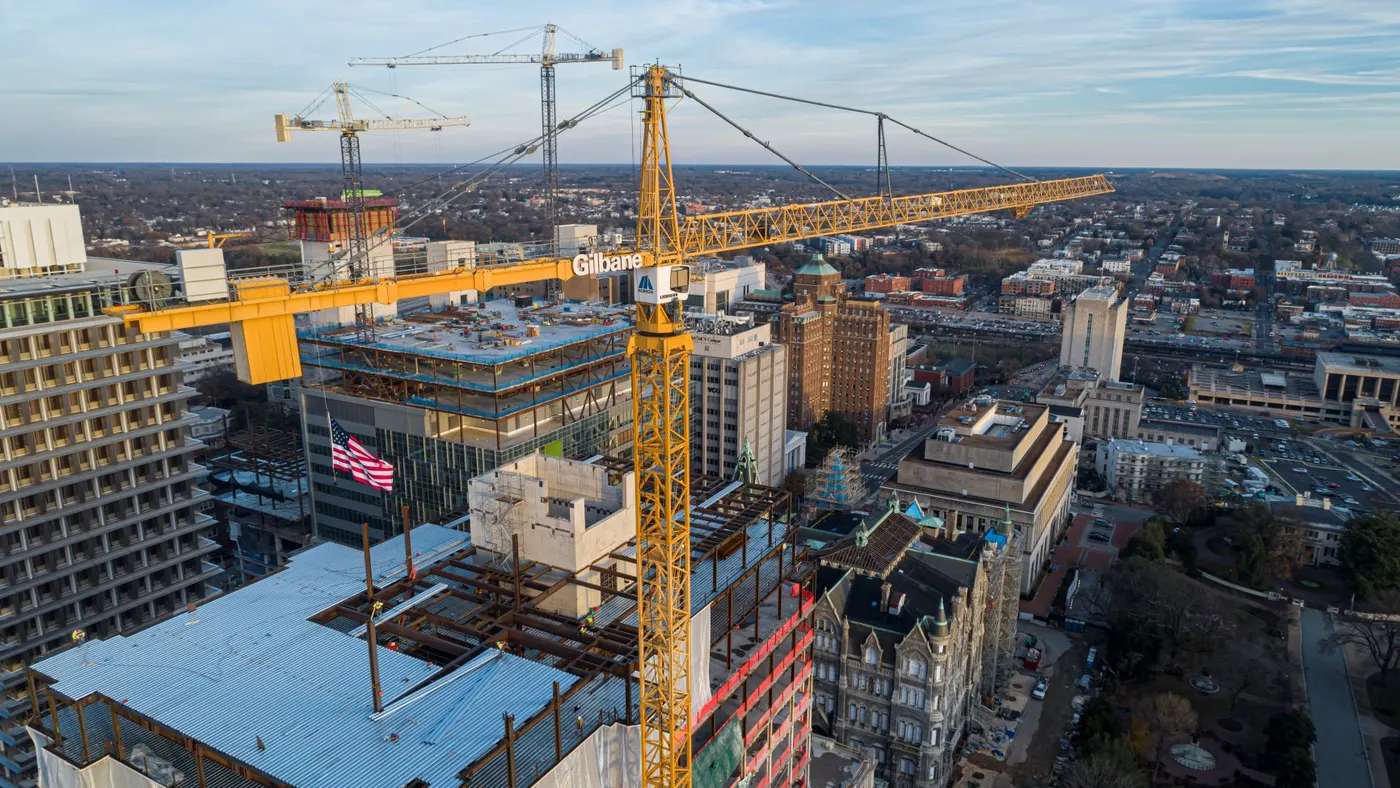
What to know before starting a drone program
Editor's note: Rod Dir is CEO of Talon, a infrastructure data capture firm.
Drones have been widely used in road and tower construction projects for a while, but now drone use is making inroads into other types of construction jobs. That's a positive development because, when used correctly and to the fullest potential, drones can help construction companies operate more efficiently while keeping workers safer and more productive.

Before starting a drone program, the key is to understand exactly how it can improve your operation. If you don't take the time to explore how a drone program can replace current processes and generate greater efficiencies, you'll end up with a cool toy that doesn't create as much value as it's capable of providing. It's worth the effort to find out how drones can deliver a great return on your investment.
One of the most popular and effective uses of drones in construction today is in surveying sites and capturing preconstruction images, which can significantly improve site engineering work. Safety is a top concern for construction companies too, and you can use a drone to improve safety by surveying sites for hazardous materials and other dangers remotely.
Another top pain point for construction companies is the time lost between when work on a particular construction phase is finished and an inspection is required so that the project can move forward. With drone images and the right software, you can do inspections in real time, with offsite experts evaluating work and flagging deficiencies so the crew can address them before leaving the site.
Construction companies can use drone captures and a good software platform to index the work completed against an audit checklist. The construction crew can upload images of most any type of work, including plumbing, electrical and drywall work for an inspector to evaluate instead of waiting hours or even days for an onsite inspection. Drones are also a great way to create marketing and promotional material and keep clients updated during a build, capturing a bird's-eye view of the project at various stages and making visits to faraway sites unnecessary.
Automation and collaboration
A drone program can enhance safety and yield greater efficiency in all the ways outlined above and more, but to truly maximize returns on the investment, you need a platform to store the images and data gathered by drones and enable collaboration across teams. Companies that don't have a robust system for storing, sharing and filing these images are missing out on this aspect of the value drones can bring.
Many first-time drone users fall into this trap. They'll routinely file images on network drives or in an email, but when they want to go back and access those images, there's no easy way to find them. With a platform, you can organize images in a way that makes your drone program more productive and efficient. You can add labels, e.g., rooftop, foundation, etc., that are indexed so you can do a quick search and find what you need.
Organized and indexed data and imagery on a platform are excellent tools that you can use beyond the immediate needs of single project. Construction companies can access that material for training and engineering purposes and more. Even better, with a platform that incorporates artificial intelligence and machine learning, you can use data to automate tasks like inspections by teaching the software to identify defects like gaps in a wall, etc. That saves even more time and money.
Information into action
One thing to know before you start a drone program is that drones produce a ton of data, and that information belongs to your company. It's a valuable commodity that your drone program will produce, and you'll want to make sure that data is transformed into actionable insights that can improve your operation instead of languishing untapped on someone's hard drive.
Drones can collect data and capture images from the field that are incredibly valuable before, during and after a construction project. They can help you save time and money by eliminating unnecessary site visits and expediting inspections so that electrical and plumbing work is signed off before drywall goes up and drywall work is approved before paint goes on the wall.
With the popularity of drone technologies, storing data and providing an effective way to make data accessible can be challenging. The data is only valuable if it can be easily viewed and enhanced for a useful purpose.
Cloud storage platforms such as AWS, IBM and Microsoft Azure allow team members to access the data from multiple sources and provide the needed storage. Other companies will store the data in-house on company servers but these can be overwhelmed by the volume of images and open the door to security concerns. However, solution providers like my firm can process the images for specific use cases, improve the viewing experience and allow collaboration across multiple users on the same content.
The key is to pair technology like drones with a platform that allows you to get the full value of the data you collect. This will enable you to keep workers safer and more productive while improving collaboration and automating core tasks for greater efficiency.

 Jenn Goodman
Jenn Goodman



